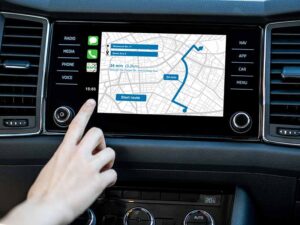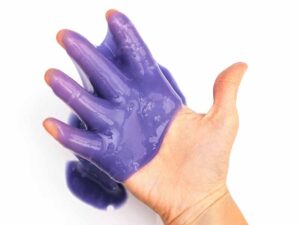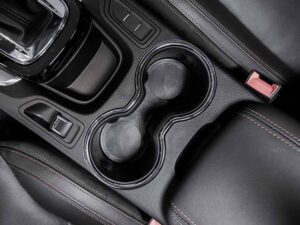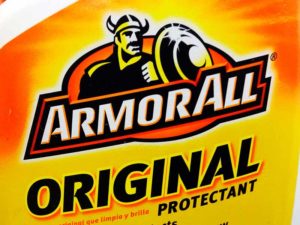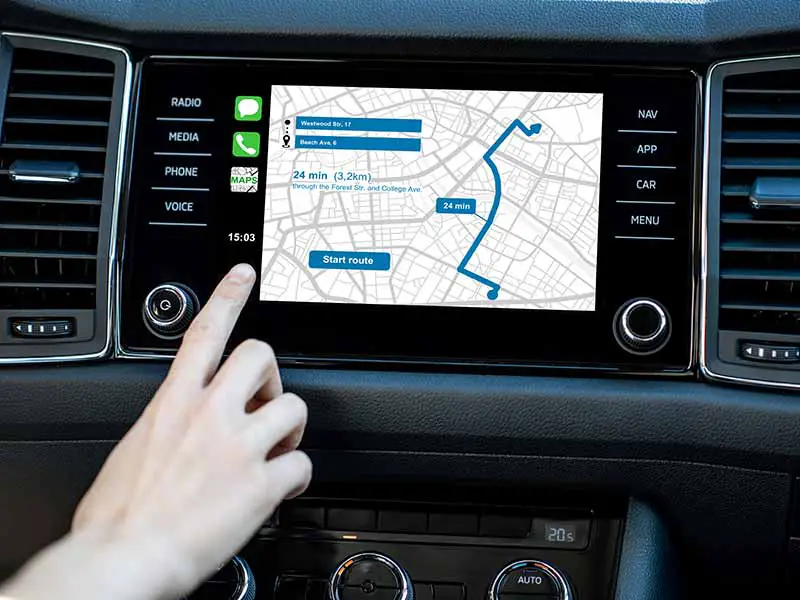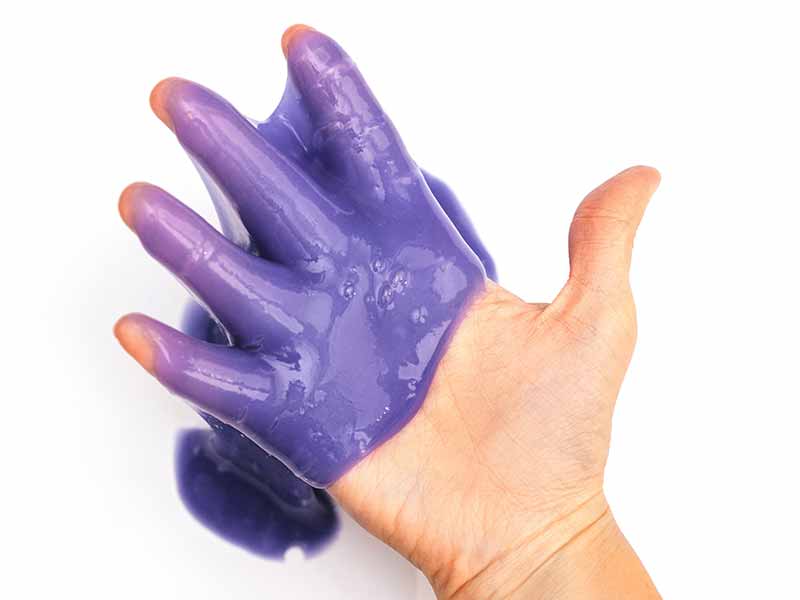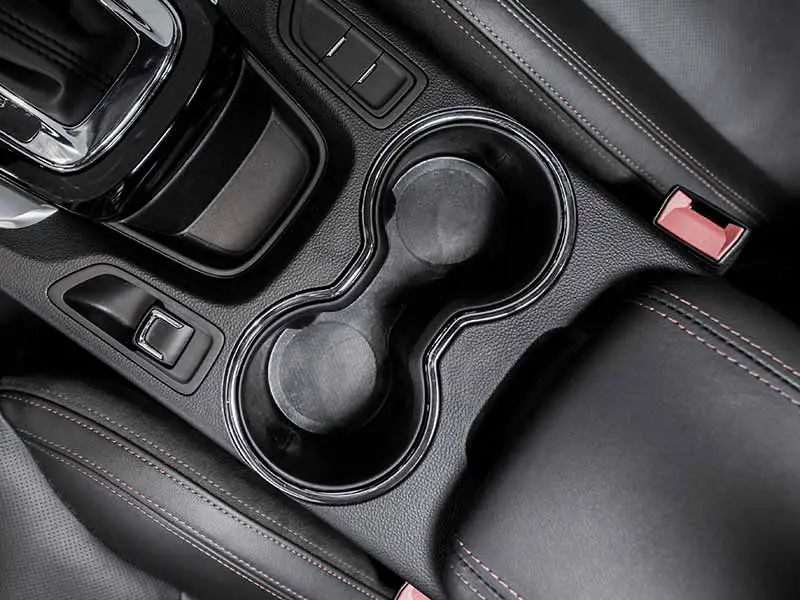Table of Contents
It can be tough to keep a car interior clean and car seats are one of the toughest parts of your interior to keep clean. Car seat stains come in all sorts of types and sizes; blood, coffee, juice, deep-set dirt, and many more.
Professional detailers probably know off the top of their head how to remove almost any stain. Fortunately for you this article to inform you about how to remove stains of almost all types of cleaning jobs.
Unfortunately, there is no one car interior cleaner that will remove all stains, although a good fabric cleaner will handle many. Continue reading to learn what to use to remove almost any stain.
Different types of stains
Due to the many varieties of car seat stains, we’ve sorted and categorized them into groups. These groups consist of stains that can be tackled in the same or similar way to each other.
Let’s breakdown the different types of stains, as well as the different types of enzyme-based detergents best for removing them.
Protein Stains
Protein stains are those which are caused by protein-based substances like blood, vomit, sweat, and pretty much any other organic/bodily fluid you can think of.
Protein stains are especially hard because they coagulate, or harden from a liquid form into a solid, if not addressed in time.
Proteases are the enzymes that best get rid of proteins. They are present in almost every detergent you’ll use due to how common protein-based stains are.
Starch Stains
Starch-heavy substances cause starch stains. These substances are usually food-based and include tomato sauce, chocolate syrup, gravies, potatoes, and baby food.
Amylases, like proteases to proteins, accelerate the breakdown of starches into soluble compounds that can be more easily removed.
Fruit Stains
Fruit stains are caused by fresh fruits such as apples, bananas, oranges, grapes, etc. which are high in the sugar pectin.
Pectinases are the enzymes which best attack pectin, deconstructing the complex sugar into easier to clean compounds.
Oil Stains
Oil stains are caused by substances that contain lipids. These include grease, lipstick, butter, and oily sauces, and dressings.
Lipases are the corresponding enzymes for lipids, breaking them down from triglycerides into fatty acids and glycerol, which are much more soluble in water, and therefore much easier to clean.
Gum Stains
These stains are any that are caused by gum. It’s as simple as that.
Mananases breakdown the mannan (the substance which makes gum sticky) in gum stains, making the separation of the gum from the seat much, much easier.
General Stains
General stains are the ones that come from mud, dirt, and dust. Mud is by far the hardest of the three to remove, but don’t underestimate the other two!
Cellulases are what should be used against general stains. Most general stains become deep-set by getting trapped in the cellulose microfibrils, the frayed ends of fibers that are common in repeatedly worn down fabrics. Cellulases remove those microfibrils, allowing for the deep-set dirt and dust particles to be easily removed, and preventing those same stains from becoming deep-set in the future.

How to clean fabric car seats
Cleaning stains from fabric car upholstery is a very difficult task. Because fabrics are highly absorbent when compared to leather and vinyl, stains will set in much quicker than with those types of seats. Whenever you stain your cloth car seats, it is very important to act fast!
Use a Cloth Upholstery-Specific Detergent
The best choice is to use fabric upholstery cleaner, which seems a little bit obvious, but that because it’s true! If you end up staining your cloth car seats, then the best thing to do is to apply a fabric-specific detergent/cleaner to the stain and follow the directions on the bottle.
Remember the listed enzymes from the last section, because those are what you should be looking for when finding the right cleaner. Some detergents have all six of them, and some only have one, so it’s important to look!
If you don’t have access to these types of detergents, then follow the steps listed below to clean your fabric car upholstery.
Use Club Soda
Use a spray bottle to directly apply club soda (carbonated water) to the stain on the seat. Use a brush to scrub the stain away, then wipe away with a clean cloth or a paper towel.
Use a Baking Soda Solution
Mix one fourth a cup of baking soda with a cup of warm water or hot water, and apply a light amount of the baking soda solution to the stain with a toothbrush (preferably not the one you use daily), scrubbing away the stain. If the stain is tough, let the baking soda solution sit for 30 minutes before you wipe away what’s left from the seat with a clean cloth.
Use a Vinegar Solution
Mix a cup of vinegar, a few drops of dishwashing soap, and a gallon of hot water or warm water in a bucket or a tub-like container. Dab the mixture directly onto the stain, scrub with a brush until it is out of the cloth, and then wash away with clean water.
Use Laundry Detergent
Just like how your cloth and fabric clothes can be washed with laundry detergent, so can your cloth car seats. Mix laundry detergent with hot water in a bucket or tub-like container, just like how you would with the vinegar solution. Dampen the stains with the solution, and then clean it off with a towel and cold water.
How to clean leather car seats
Leather car seats are a whole different beast from cloth seats. While stains set quicker in fabric, leather is a much more expensive and high-quality material than virtually any cloth. This means that extra care and caution is needed to clean leather car seats.
Because of the care-intensive process of cleaning leather seats, the DIY methods should be used as a last resort. Remember: replacing cloth is much cheaper than replacing leather.
Use a Leather Upholstery-Specific Detergent
As previously mentioned, leather is a much higher quality material than fabric, so it is recommended that you use a professionally designed and produced detergent to remove the stain.
Use Nail Polish Remover or Rubbing Alcohol
Nail polish remover has an alcohol base, making it just as effective as rubbing alcohol for this method. Blotting the stain with a cotton ball will remove the stain from the leather, but the process takes time. Once you have the stain removed, clean the alcohol off the seats with warm water and dish soap, using a towel to wipe away the alcohol.
Use Vinegar Solution
Use the same vinegar cleaning solution as was mentioned in the fabric section (a fourth cup vinegar, a few drops dishwashing soap, a gallon of warm to hot water). Dab directly onto the stained area, and scrub lightly with a brush. Clean the solution from the car seats with warm water and a clean towel.
Use a Lemon Juice and Cream of Tartar Paste
If you’re familiar with baking (or weirdly named substances), then you should also be familiar with potassium bitartrate, or its more common name, cream of tartar. Cream of tartar is not a cream, but a powdery acid that is has great cleaning uses.
Mix equal parts cream of tartar and lemon juice into a paste and apply it to the stain. You should let the paste sit for around 30 minutes before you can wipe it away with a wet sponge.
There is one big caveat with this method: this solution has a bleaching effect, and should only be used on lightly-colored leather seats.
How to clean bloodstains from car seats
Bloodstains are notorious for being very difficult to remove, and this goes for both leather and cloth surfaces. This is due to the presence of hemoglobin in the blood, a protein whose job is to transport oxygen through the bloodstream. Hemoglobin also has a very useful trait of coagulating, or clotting, almost immediately when exposed to air, which helps the protein to stymie blood loss. However, this trait also applies to bloodstains, causing them to bind to any surface it has been spilled on, making the removal process even harder than it is for other stains.
Removing Bloodstains From Cloth Car Seats
The first thing you do with bloodstains on fabric is the first thing you’d do with any cloth stain; remove as much of it as quickly as possible. Sponge the area with cold water, as any form of heat will cause the stain to set in the cloth car seat.
Use Hydrogen Peroxide
Hydrogen peroxide is a mild bleach, and thus should only be used on fabrics and cloth that have been deemed safe for its use. To test if this is true for your cloth car seats, apply a very small amount of hydrogen peroxide to a hidden area on your seat, and observe its effects.
Once you have removed as much blood as possible by simply sponging, apply a small amount of hydrogen peroxide to the bloodstain, and the stain should “disappear” quickly. If the stain is not removed with the first round of hydrogen peroxide, reapply it until clean.
After fully cleaning the stain, rinse the area with cold water once again to remove any leftover hydrogen peroxide.
Use Liquid Dishwashing Detergent
Because hydrogen peroxide can permanently bleach some fabrics, there is another method of cleaning the car interior that uses less damaging substances.
Mix one tablespoon of dishwashing detergent and two cups of cold water, and start sponging the stain with a clean, white towel and the cleaning solution. Continue sponging the bloodstain until it disappears.
Finally, sponge the area again with cold water to remove any stray dishwashing detergent, and blot dry with a clean, dry towel.
Removing Bloodstains From Leather Car Seats
Sponge up any of the excess blood as possible. If the bloodstain has dried, then try to gently brush off as much as possible with a stiff brush.
Use Club Soda
There are two methods of applying the club soda. You can either apply it directly to the bloodstain with a spray bottle or to a clean cloth. Either way, you will want to sponge the area with the club soda. You can use lots of club soda, as it is not as harmful to the leather as other acidic solutions are.
Dab the area dry with a paper towel, and repeat the previous step as many times as necessary.
Use Dishwashing Detergent
Sponge the bloodstains with a cleaning solution of dish soap and cold water until the cloth you are using can’t collect any more blood.
Dab the area dry with a paper towel or another clean cloth and repeat the process until the stain has been removed from the seat.
Use an Ammonium Hydroxide Solution
If the previous methods prove unsuccessful, then you can go with a very weak ammonium hydroxide solution. This solution must be weak, as ammonium hydroxide is a very strong base, and can ruin leather if not handled correctly.
Mix 4 drops of ammonium hydroxide per gallon of water, and apply to the bloodstain. After the application of the ammonium hydroxide, do the club soda method of cleaning previously mentioned.
It is very important to spot test the ammonium hydroxide solution on a hidden piece of leather, as it may prove too strong for your car seats.
DO NOT USE AMMONIUM HYDROXIDE AND BLEACH!!!
MIXING THE TWO TOGETHER WILL IMMEDIATELY PRODUCE MUSTARD GAS, AN EXTREMELY DEADLY GAS!!!
Use a Leather Upholstery Cleaner
If you don’t feel confident in your ability to not ruin your leather car seat, then your best bet is to fall back on a professionally designed and produced cleaner. This is the safest bet, but will most likely end up being the most expensive depending on which brand you buy.
Helpful Links
Conclusion
Removing stains from your car seats doesn’t mean you have to call up a detailing service. There is a multitude of ways that you can clean them yourself. From coffee to blood to grease, any stain can be removed from your cloth seats without the help of expensive detailing services.
An important thing to always remember is that removing stains from your car requires lots of care and caution. Applying strong acids and bases can lead to permanent damage to your seat.
When done correctly though, the sense of self-satisfaction will match the feeling of pride you’ll get from seeing your magnificent clean car seat.
